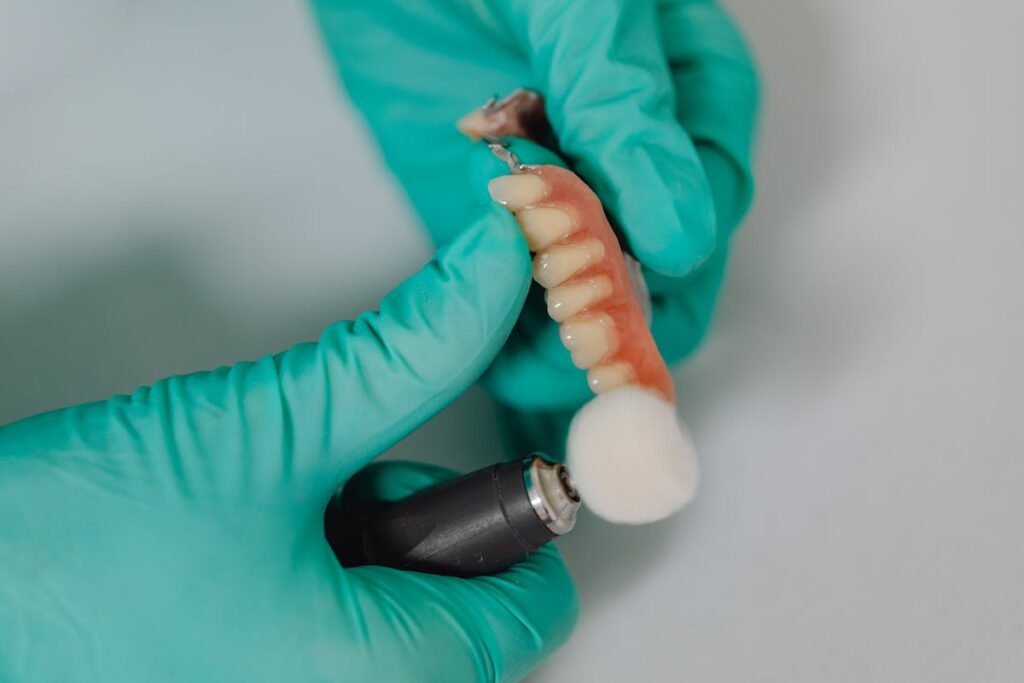Endodontic treatment represents a specialized branch of dentistry focused on addressing issues within the tooth’s internal structures. When dental problems extend beyond routine care, specific warning signs often emerge, signaling the need for expert intervention. Patients in Burien experiencing persistent tooth-related symptoms should understand these critical indicators to seek timely endodontic care. Recognizing these signs early can mean the difference between saving or losing a natural tooth.
Persistent Tooth Sensitivity to Hot and Cold
Persistent tooth sensitivity to hot and cold temperatures often signals underlying dental issues requiring endodontic evaluation. When patients experience sharp, lingering pain from temperature changes, it may indicate damage to the tooth’s pulp or nerve tissue.
Common tooth sensitivity triggers include consuming hot beverages, cold foods, or breathing cold air. While mild sensitivity might be managed with desensitizing toothpaste, persistent symptoms lasting more than several weeks warrant professional assessment. Tooth sensitivity management through over-the-counter products may temporarily mask the problem without addressing the root cause.
An endodontist can determine if the sensitivity stems from exposed dentin, cracked teeth, decay, or compromised dental work. Early intervention prevents the progression of dental problems that could necessitate more extensive treatment, such as root canal therapy or tooth extraction.
Severe Pain While Chewing or Biting
Sharp, persistent pain while chewing often indicates significant dental pulp inflammation or infection requiring endodontic intervention. The discomfort typically intensifies with pressure during biting and may coincide with heightened sensitivity to hot and cold temperatures. When these symptoms occur together, they strongly suggest compromised tooth pulp that necessitates immediate evaluation by an endodontic specialist.
Sharp, Persistent Tooth Pain
When experiencing sharp, persistent tooth pain while chewing or biting, patients may be dealing with a serious dental condition that requires immediate endodontic evaluation. The pain often manifests as radiating discomfort that extends beyond the affected tooth, potentially indicating damage to the tooth’s nerve or surrounding tissues.
This type of dental pain typically signals inflammation or infection within the tooth’s pulp chamber, where nerves and blood vessels reside. Patients frequently report intermittent aching that intensifies with temperature changes or pressure. The persistent nature of the pain, especially when it disrupts daily activities or sleep, suggests potential nerve damage or decay that has reached the tooth’s inner structures. Early intervention by an endodontic specialist can prevent further complications and may help preserve the natural tooth structure.
Hot/Cold Sensitivity Reactions
Heightened sensitivity to temperature changes often signals underlying dental pathology requiring endodontic intervention. When patients experience sharp, lingering discomfort after exposure to hot or cold substances, this may indicate compromised pulpal health requiring specialist attention.
While intermittent sensitivity is common and may resolve independently, persistent reactions to temperature variations warrant professional evaluation. External stimuli impact the dental pulp through microscopic tubules in the dentin, and when these reactions become severe or prolonged, it could indicate inflammation or infection within the tooth’s nerve tissue. A qualified endodontist can determine whether the sensitivity stems from reversible pulpitis or has progressed to an irreversible condition necessitating root canal therapy. Early intervention typically yields more favorable treatment outcomes and prevents further deterioration of dental structures.
Pressure-Induced Discomfort While Eating
Pain during mastication represents another significant indicator of endodontic problems requiring specialist evaluation. When patients experience discomfort while chewing or applying pressure to specific teeth, it often signals underlying dental issues that warrant immediate attention.
The pain may manifest when uneven bite pressure is applied, particularly during regular eating activities. Patients typically report sharp, localized discomfort when biting down on certain foods or when tooth misalignment causes irregular contact between upper and lower teeth. This sensitivity to pressure can indicate various endodontic conditions, including cracked teeth, damaged pulp tissue, or periodontal inflammation. In some cases, the pain intensifies gradually over time, while in others, it presents as sudden, acute discomfort. A professional endodontic assessment in Burien becomes essential to prevent further deterioration and determine appropriate treatment protocols.
Swollen or Tender Gums Around a Specific Tooth
Localized gum swelling and tenderness around a single tooth often indicates an underlying endodontic problem requiring immediate professional evaluation. The inflammation typically manifests as redness, unusual gum discoloration, and pronounced sensitivity to touch in the affected area. These symptoms frequently signal infection or inflammation within the tooth’s pulp chamber.
When left untreated, the condition can progress to form an abscess, potentially leading to severe complications including difficulty swallowing saliva and spreading infection. The surrounding tissue may become increasingly painful and exhibit signs of acute inflammation. A qualified endodontist can diagnose the root cause through detailed examination and appropriate imaging techniques. Early intervention through proper endodontic treatment can prevent further tissue damage and help preserve the affected tooth’s structural integrity.
Darkening or Discoloration of a Single Tooth
When a single tooth exhibits noticeable darkening or discoloration compared to surrounding teeth, it often indicates internal tissue damage or necrosis of the dental pulp. This internal tooth discoloration typically develops gradually as the pulp tissue deteriorates, causing the tooth to appear grayish, brownish, or black.
The discoloration process frequently begins at the tooth root and progresses upward through the crown. This tooth root discoloration can result from various factors, including previous trauma, severe decay, or failed dental procedures. As blood vessels within the tooth break down, they release compounds that stain the surrounding dentin, creating a permanent change in the tooth’s appearance. This type of discoloration cannot be corrected through external whitening treatments and usually requires endodontic intervention to address the underlying pulpal condition.

Deep Cavity or Cracked Tooth
Deep cavities and cracked teeth frequently manifest through severe pain during biting and chewing activities. Microscopic fractures in tooth structure, while not visible to the naked eye, can create persistent sensitivity to temperature changes and pressure. These hidden cracks often extend into the tooth’s pulp chamber, requiring immediate endodontic evaluation to prevent further deterioration and infection.
Severe Pain When Biting
Sharp, intense pain while biting down represents one of the most common indicators of either a deep cavity or a cracked tooth requiring endodontic intervention. This intense biting discomfort often occurs when pressure is applied to a specific tooth, signaling potential damage to the tooth’s pulp or surrounding tissues.
When patients experience recurring chewing pain, it typically indicates inflammation or infection within the tooth’s nerve chambers. The sensation may range from a dull ache to acute, localized pain that intensifies during meals. This symptom frequently correlates with compromised dental pulp, requiring immediate evaluation by an endodontic specialist. Left untreated, the condition can worsen, leading to abscess formation or more extensive dental complications. Professional assessment can determine whether root canal therapy or other endodontic procedures are necessary to alleviate the pain and preserve the affected tooth.
Hidden Cracks Causing Sensitivity
Hidden cracks within tooth structures often evade detection during routine dental examinations, yet they can trigger significant temperature sensitivity and persistent discomfort. These microscopic fractures can develop gradually from grinding, trauma, or excessive bite forces, creating pathways for bacteria and temperature changes to reach the sensitive inner layers of the tooth.
Endodontic specialists employ minimally invasive diagnostics, including specialized imaging and testing procedures, to identify these elusive structural compromises. The hidden crack pain typically manifests as sharp sensations when consuming hot or cold substances, or as lingering sensitivity after the stimulus is removed. Early detection and intervention by an endodontist can prevent the crack from propagating further and potentially save the tooth from more extensive damage requiring root canal therapy or extraction.
Previous Failed Root Canal Treatment
Root canal treatments can fail for several distinct reasons, even when initially performed by qualified practitioners. Previous endodontic treatment failure may occur due to complex root anatomy that was not fully addressed, bacterial recontamination, or inadequate root canal sealing during the original procedure.
Common indicators of a failed root canal include persistent pain, swelling, or the development of an abscess months or years after the initial treatment. In some cases, post-operative X-rays may reveal incomplete filling of the canal system or signs of recurring infection. When a prior root canal fails, a specialist can perform retreatment by removing the original filling material, addressing any missed anatomy, and ensuring thorough disinfection and sealing of the entire root canal system.
Prolonged Pain After Dental Trauma
When dental trauma occurs from accidents or injuries, patients may experience prolonged tooth pain that persists beyond the normal healing period. This sustained discomfort often indicates potential damage to the tooth’s internal structures, particularly the nerve and blood vessels within the pulp chamber.
Signs of trauma-related dental issues include tooth discoloration, which may appear as gray, brown, or black changes to the affected tooth. Patients might require repeated dental procedures to address complications arising from the initial injury. An endodontist can evaluate whether nerve damage has occurred and determine if root canal therapy is necessary. Early intervention by a specialist can prevent further deterioration of the tooth structure and help preserve natural dentition, especially in cases where trauma has compromised the tooth’s essentiality.
Tooth Abscess or Pimple on the Gums
A dental abscess manifests as a pus-filled pocket that develops near the root of an infected tooth, often appearing as a raised bump or pimple on the gum tissue. This condition typically indicates severe infection that requires immediate endodontic intervention from a qualified specialist.
The presence of an abscess frequently coincides with unusual gum discoloration around the affected area, ranging from deep red to purplish hues. Patients may notice unresolved gum inflammation that persists despite proper oral hygiene practices. The abscess can cause significant discomfort, swelling, and sensitivity to temperature changes. If left untreated, the infection may spread to surrounding tissues and potentially lead to systemic health complications. Professional endodontic treatment aims to eliminate the infection, preserve the natural tooth structure, and restore proper oral function.
Lingering Pain That Won’t Respond to Over-the-Counter Medicine
Persistent dental pain that fails to respond to conventional pain relievers often signals the need for endodontic intervention. This type of discomfort typically indicates inflammation or infection of the tooth’s pulp, which contains essential nerve tissue and blood vessels.
When over-the-counter medications prove ineffective in managing dental pain, it may indicate the progressive deterioration of the pulp tissue. This condition can lead to signs of infection, including heightened sensitivity to temperature changes and pressure. Without proper treatment, the situation may worsen, potentially leading to the development of abscess formation in the surrounding tissues.
Professional endodontic evaluation becomes vital when pain persists beyond several days, particularly if accompanied by swelling or fever. Early intervention through root canal therapy can prevent further complications and preserve the affected tooth’s structural integrity.
Frequently Asked Questions
How Long Does Endodontic Treatment Typically Take to Complete?
Endodontic treatment typically requires 1-2 visits, lasting 60-90 minutes each. The post treatment recovery period varies based on patient’s oral health history, with most patients resuming normal activities within 24-48 hours.
What Is the Average Cost of Endodontic Treatment?
Endodontic treatment costs typically range from $700 to $1,500 per tooth. The average cost varies based on tooth location, complexity, and insurance reimbursement policies. Additional fees may apply for specialized procedures or complications.
Can I Drive Myself Home After Endodontic Treatment?
Patients can typically drive themselves home after endodontic treatment if only local anesthesia was used. However, if sedation was administered for pain management, arranging transportation is necessary during the initial recovery timeline.
Is Endodontic Treatment Covered by Dental Insurance?
Most dental insurance plans provide partial coverage for endodontic treatment, though policy coverage details vary considerably. Plans typically cover 50-80% of costs, subject to annual maximums and specific dental insurance limitations.
How Soon Can I Return to Work After Endodontic Treatment?
Most patients can return to work the same day following endodontic treatment. Post-procedure discomfort management may require 1-2 days of rest, while tooth sensitivity reduction typically occurs within 24-48 hours after the procedure.
